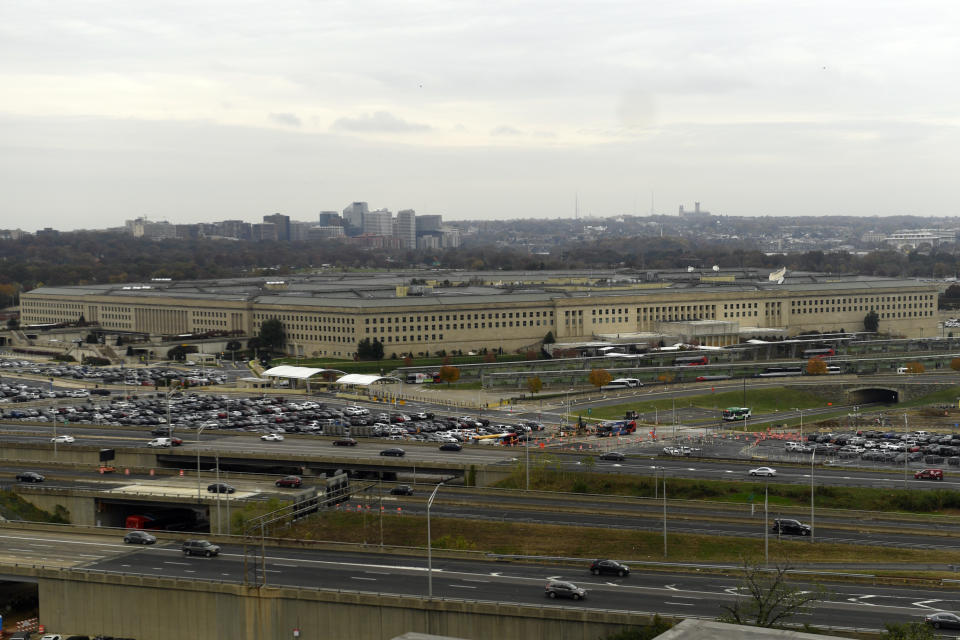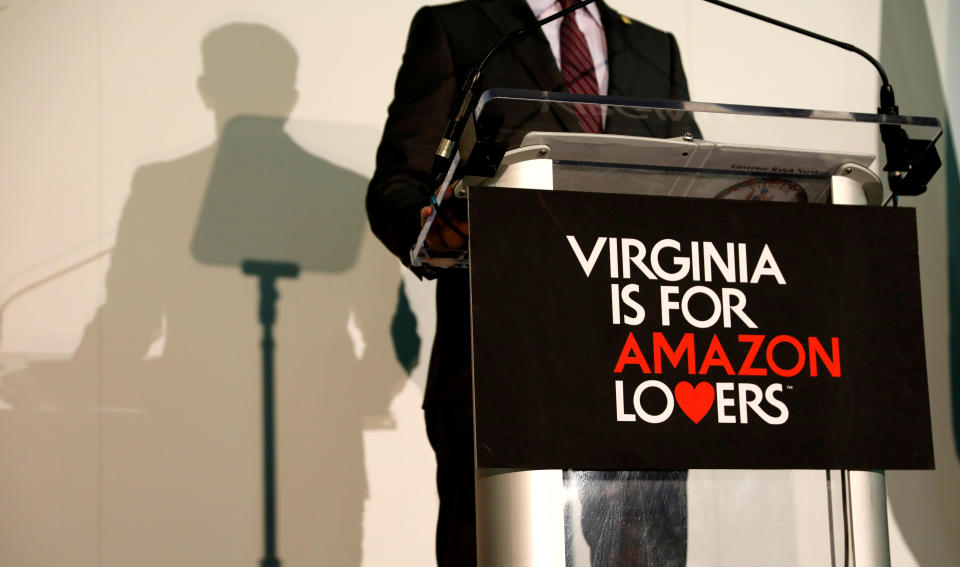Is Amazon about to turn into Lockheed Martin? What the company's move to Crystal City says about its future

CRYSTAL CITY, Va. — If the military-industrial complex of lore has an epicenter, then it is surely located at 929 Long Bridge Drive in Crystal City, across the Potomac River from Washington, D.C.
Here, in a charmless building of greenish glass and pale yellow stone, are housed the government relations and defense offices of aviation giant Boeing. The building fronts a strip of elevated highway, which acts as a wall. On the other side of that wall is one of Boeing’s biggest customers: the Pentagon, home to the Department of Defense. So close is the defense establishment to Boeing that just in the month of September, the Chicago-based company won $13.7 billion in government contracts.
In 1961, President Dwight D. Eisenhower warned, in his final White House speech, that “a permanent armaments industry of vast proportions” was quickly becoming a shadow branch of the federal government.
Crystal City is Eisenhower’s warning made flesh, or at least concrete and glass. Lined up like supplicants to the Pentagon along Crystal Drive, the closest thing Crystal City has to a Main Street, are the nation’s biggest defense contractors: Raytheon, Lockheed Martin, General Dynamics and many others. These companies form the backbone of Virginia’s defense sector, whose 15,000 contractors won more than $509 billion from the Pentagon in contracts between 2000 and 2012, according to a Virginia business group.

These will soon be joined by Amazon, which announced earlier this week that it would locate 25,000 workers at a Crystal City campus to be known as HQ2 (another half of HQ2 will be in Long Island City, in Queens, N.Y., and will also have 25,000 employees). Most of the discussion surrounding the move has been about how Amazon will remake Crystal City and its environs, which the company has sought to rebrand as National Landing. On land that is today, by turns, empty, underused or home to inconsequential buildings, some imagine a gleaming new city to rival Amazon’s flagship campus in Seattle.
Amazon will doubtlessly change Crystal City beyond recognition. But perhaps not before Crystal City exercises its own influence on Amazon.
For one, this is not entirely the bleak landscape some have described. Colorful murals dot many of the buildings, adding splashes of color to building facades. In a gallery that is part of the Crystal City Shops mall, artist Justyne Fischer creates black-and-white portraits of people of color killed by police violence. A studio of such luxurious size is impossible to imagine in Washington itself. But only a short walk away, one of Washington’s top chefs, José Andrés, has an outpost of his popular restaurant Jaleo. At lunch, getting a table is no difficulty at all, and the food is just as good as it is at the restaurant’s original location in Penn Quarter.
But the Department of Defense looms, making clear that Crystal City is no ordinary place. It is impossible to walk more than a few feet without encountering someone in military fatigues. Many men have the telltale high-and-tight haircut of the armed services. The headquarters of Lockheed Martin, builder of the $89.2 million F-35 Lightning II, a stealth multirole fighter, loom over an outlet of Sweetgreen, builder of the $10.25 umami grain bowl.

This is the strange, slightly surreal world in which Amazon has decided to land. “They definitely moved to Crystal City to be closer to the Pentagon,” says William D. Hartung, security expert at the Center for International Policy and author of “Prophets of War: Lockheed Martin and the Making of the Military-Industrial Complex.”
While not yet a contracting powerhouse on the scale of Raytheon, Amazon has embraced the military far more closely and eagerly than its Silicon Valley peers. Its cloud computing business, Amazon Web Services, has a client in the Central Intelligence Agency, in a contract worth $600 million.
Last year, Amazon announced the creation of a new branch of Amazon Web Services that would provide “the U.S. Intelligence Community a commercial cloud capability across all classification levels: Unclassified, Sensitive, Secret, and Top Secret.”
Hartung and others have speculated that Amazon’s move to Crystal City is intended to bolster its prospects of winning the $10 billion Joint Enterprise Defense Infrastructure, known as JEDI for short, another massive cloud computing contract. “This IT stuff is a huge challenge that is going to cost billions of dollars in the years to come,” Hartung says, calling the $10 billion a “down payment.”
“This move makes it pretty clear that [Amazon founder Jeff] Bezos wants Amazon to be more embedded with the military,” says Steve Vogel, who has authored a history of the Pentagon. That’s in contrast to some other Silicon Valley companies, most notably Google, whose executives were pressured by employees to end the company’s affiliation with the Department of Defense. Amazon employees are unlikely to similarly persuade Bezos. “If big tech companies are going to turn their back on U.S. Department of Defense, this country is going to be in trouble,” the Amazon founder said at a summit hosted by Wired magazine last month.

If it is to work more closely with the Department of Defense, Amazon will almost certainly need thousands of employees with security clearances to enable them to work on sensitive military projects. The wait time for a top-secret clearance is currently more than 500 days. Impatience with the process could lead Amazon to poach employees from some of its new Crystal City neighbors, leading to bidding wars over sought-after workers. As former CIA officer Christopher Burgess reminds us, “It’s always cheaper to hire local than import talent.”
Burgess also cautions against casting Amazon’s move to Northern Virginia entirely in defense-related terms. “There’s a lot more to government than defense,” he says. Burgess points to the recent debacle at the Department of Veterans Affairs, whose 50-year-old computer system has kept many veterans from receiving benefits on time.
Then there’s the business of lobbying, which Amazon already does — but will have an easier time with from offices essentially looking out over Capitol Hill. And there’s also the Washington Post, which is owned by Bezos, who may have been telegraphing the Crystal City move last year when he bought a 27,000 square foot property — to be converted into the biggest house in Washington — in the district’s Kalorama neighborhood, right next to where President Woodrow Wilson lived after leaving the White House. That house is a short drive from the Crystal City location where Amazon’s new headquarters will soon rise.
_____
Read more from Yahoo News:
George Conway: Republican Party has become a ‘personality cult’ under Trump
An American killing: Why did the U.S. Park Police fatally shoot Bijan Ghaisar?
Cory Booker: I will ‘take some time over the coming months’ to consider 2020 bid
Hugh Jackman on ‘The Front Runner’: I told Gary Hart I took his legacy ‘very seriously’



